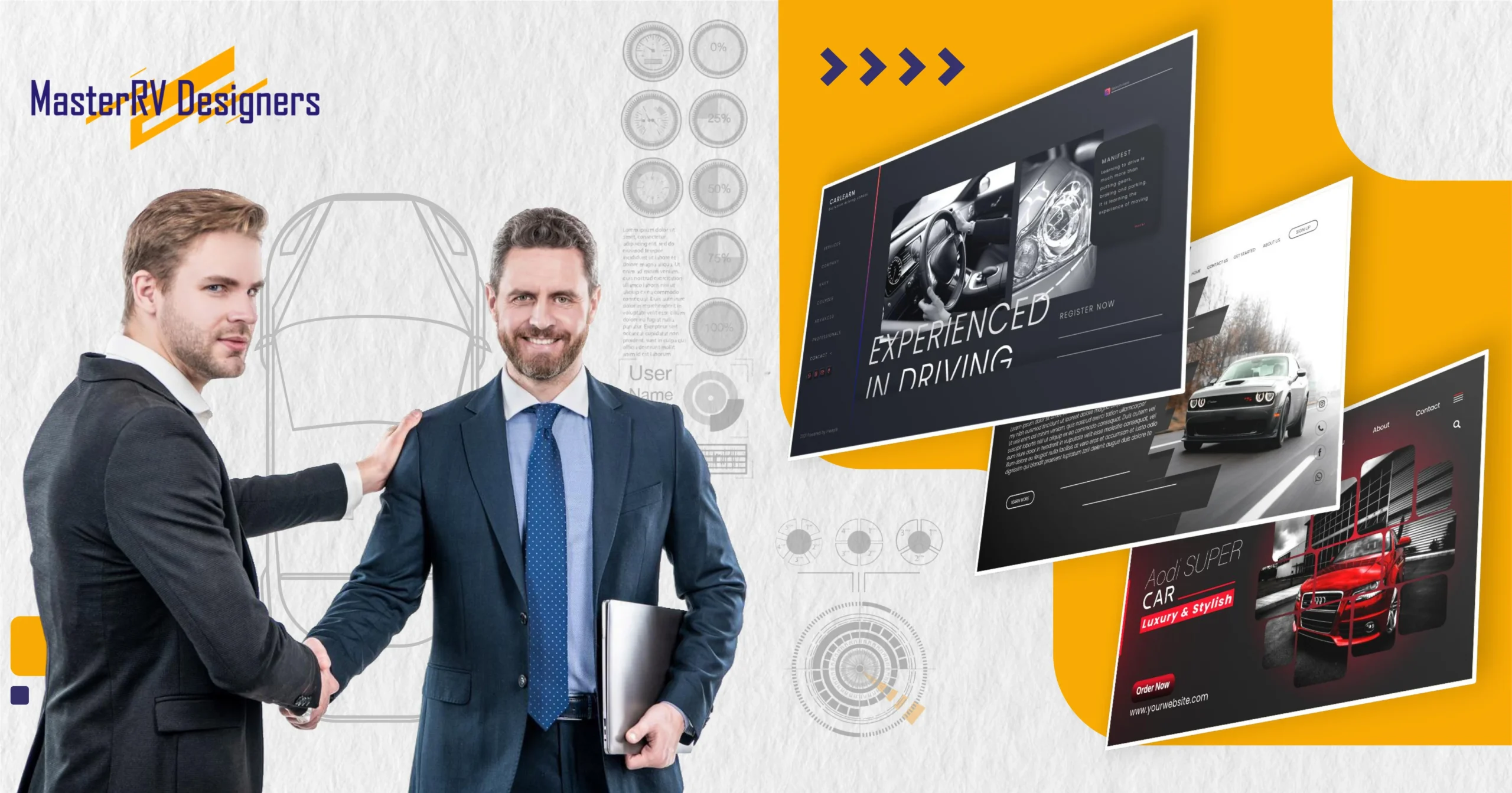TL;DR
Storytelling transforms slides from information into influence. A compelling presentation balances narrative structure, purposeful design, and confident delivery to engage audiences, reinforce credibility, and drive decisions. MasterRV Designers helps professionals craft story-driven decks that inspire action, retain attention, and leave lasting impact in investor pitches, leadership briefings, and client presentations.
Introduction
A powerful presentation is more than a collection of slides it’s a story brought to life. Even the most visually polished deck can fall flat if it lacks a compelling narrative arc, clear logic, and emotional resonance. For public speakers, the ability to craft a story with slides is the difference between merely informing an audience and inspiring action, alignment, or investment.
At MasterRV Designers, we’ve partnered with executives, founders, and corporate teams who discovered that storytelling drives retention, engagement, and decision-making far more effectively than slides alone. Slides provide structure, but your narrative creates memory, influence, and impact. Every graph, chart, visual, and icon should serve a purpose within your story reinforcing a point, highlighting insight, or guiding the audience to the next step, rather than existing in isolation.
The objective is clear: take your audience on a logical, emotional, and actionable journey, where each slide reinforces your message, builds credibility, and motivates decisions. Effective storytelling doesn’t just convey information it frames how your audience thinks, feels, and acts in response to your message.
MRV Insight: Your slides are the stage, but your story is the performance. Align them strategically to ensure your message resonates, persuades, and endures long after the presentation ends.
1. The Science Behind Storytelling in Presentations
Humans are inherently wired for stories. Neuroscience confirms that narratives engage the brain on emotional and cognitive levels far more effectively than raw data, bullet points, or isolated statistics. A well-structured story activates multiple regions of the brain, helping audiences process, retain, and act on information more efficiently. For public speakers, this means that integrating storytelling into slides is not optional it’s essential for influence and impact.
Storytelling in presentations works on three interconnected levels:
- Cognitive engagement: Stories provide context for data, helping your audience see how individual facts, numbers, or insights connect to real-world outcomes. Instead of presenting isolated metrics, a story demonstrates relationships, trends, and consequences, making complex information easier to understand and internalize.
- Emotional resonance: Emotion is the key to memory retention. When audiences feel invested in a narrative whether it’s a problem being solved, a market opportunity uncovered, or a vision articulated they are more likely to remember key messages, relate personally to your ideas, and take action. Emotional hooks also foster trust and create a lasting impression of leadership credibility.
- Behavioral influence: A structured story creates a pathway from problem to solution, generating a sense of inevitability. By guiding the audience logically and emotionally, stories encourage alignment with your recommendations, decisions, or calls to action. This makes presentations not just informative, but persuasive.
MRV Insight: Data alone informs; stories inspire. Public speakers who integrate storytelling into their slides create presentations that not only capture attention but also guide decision-making, reinforce credibility, and leave a lasting impact. The combination of narrative structure, visuals, and delivery transforms a presentation into a strategic tool for influence and action.
2. Structuring Your Slides Around a Narrative Arc
A story without structure is chaos, and the same principle applies to presentations. Even with strong visuals and compelling data, a deck that lacks a clear narrative arc risks losing audience attention and failing to drive decisions. A well-structured presentation transforms disparate insights into a persuasive journey, moving stakeholders from awareness to understanding, and ultimately, to action.
At MasterRV Designers, we recommend a four-part narrative arc for public speaking decks that ensures both logical clarity and emotional engagement:
- Setup (Context): Begin by framing the problem, opportunity, or market challenge. Clearly define why the audience should care and what’s at stake. This section sets expectations, establishes relevance, and orients the audience for the story to come. Effective context allows decision-makers to immediately grasp the importance of the insights you will present.
- Conflict (Insight): Reveal the key insights, challenges, or obstacles that must be addressed. Highlight gaps in understanding, unmet needs, or inefficiencies that your solution addresses. This is where you demonstrate analytical depth and strategic thinking, showing that you have both diagnosed the problem accurately and thought through potential solutions.
- Resolution (Solution): Present your product, idea, or recommendation as the logical next step. Demonstrate clearly how it resolves the conflict or addresses the challenge. Support your claims with data, case studies, or concise visuals, ensuring the narrative remains persuasive without overwhelming the audience with extraneous detail.
- Impact (Outcome): Conclude with measurable results, anticipated outcomes, or actionable next steps. This section ensures the audience leaves with clarity, motivation, and confidence in your leadership or proposed solution. Highlighting tangible benefits, ROI, or strategic advantages makes your story compelling and actionable.
MRV Insight: Each slide should have a distinct purpose within the narrative arc. Avoid inserting content that doesn’t advance the story even visually striking elements can derail attention if they don’t reinforce your message. Consistency, logical flow, and intentional sequencing are what transform a deck from a collection of slides into a cohesive, persuasive story.
3. Designing Slides to Enhance Storytelling
Design is far more than decoration it is a strategic amplifier of your narrative. Even the most compelling story can falter if slides confuse, distract, or overwhelm the audience. MasterRV Designers treats slide design as a storytelling tool, ensuring visuals and content work in harmony to guide comprehension, focus, and decision-making. A slide should never compete with the story; it should elevate it.
Key principles for slides that reinforce storytelling:
- One message per slide: Each slide should convey a single insight, metric, or argument. Your spoken narrative provides context and depth, while the slide reinforces the point visually. This avoids cognitive overload and ensures your audience can absorb each idea fully.
- Visual hierarchy: Leverage size, color, and placement to naturally guide the audience’s eyes. Headlines, key figures, and supporting visuals should draw attention to the most critical information first, creating a clear path through your story.
- Data visualization: Charts, graphs, and infographics should clarify rather than complicate. Visuals must make trends, comparisons, and relationships immediately understandable without additional explanation, transforming data into insight.
- Consistent branding and style: Fonts, colors, icons, and layout should reflect your organization’s identity. Visual consistency builds credibility and ensures that your design supports your story instead of distracting from it.
- Strategic white space: Avoid overcrowding slides. Clean, uncluttered layouts allow the audience to absorb information and give your spoken narrative the space to resonate. White space is not empty; it is visual breathing room that emphasizes what matters.
MRV Insight: Slides are your stage props subtle, purposeful, and enhancing your performance. When designed intentionally, each slide reinforces the story, guiding the audience seamlessly from the opening frame to your final conclusion. By harmonizing narrative, visuals, and delivery, your presentation becomes memorable, persuasive, and actionable.
4. Delivery Techniques That Bring the Story to Life
Even the most carefully structured and beautifully designed slides cannot make a meaningful impact without effective delivery. The story you’ve meticulously built only comes alive when your voice, timing, and presence guide the audience seamlessly through it. At MasterRV Designers, we emphasize that delivery is the bridge between slides and audience action it is what transforms a presentation from static visuals into a persuasive, decision-driving experience.
Key techniques to enhance storytelling in delivery:
- Narrative pacing: Vary your tempo to reflect the story arc. Slow down during complex insights to allow the audience to absorb information; accelerate during key revelations to build momentum and excitement. Pacing communicates confidence and helps maintain engagement throughout the presentation.
- Intentional pauses: Strategic pauses after major points give the audience time to process and reinforce your authority. Silence is a powerful tool it signals significance and allows critical messages to resonate.
- Vocal modulation: Use pitch, tone, and emphasis deliberately to highlight key messages and evoke emotional engagement. A monotone delivery can diminish even the most compelling content, while dynamic voice control guides attention and emphasizes priorities.
- Gestures and body language: Purposeful, controlled movements reinforce points without distracting. Maintain an open posture, use gestures sparingly to emphasize ideas, and make consistent eye contact to project confidence, credibility, and connection.
- Audience engagement: Encourage participation subtly through rhetorical questions, references to shared experiences, or brief interactions. Engaged audiences retain more, relate emotionally, and are more likely to act on your recommendations.
- Seamless slide transitions: Align your spoken cues with slide changes. Avoid reading slides verbatim; allow visuals to complement and amplify your words, creating harmony between story and visual reinforcement.
MRV Insight: Delivery is what transforms a deck from a static collection of slides into a living, persuasive narrative. Leaders who master pacing, presence, and vocal dynamics turn presentations into decision-making accelerators, leaving lasting impressions that slides alone cannot achieve. The combination of design, narrative structure, and delivery creates presentations that are not only seen and heard but also felt — driving action and trust in every audience interaction.
5. Common Storytelling Mistakes and How to Avoid Them
Even experienced presenters can unintentionally undermine their narrative. Recognizing and addressing common pitfalls ensures that slides and delivery work in harmony to persuade, engage, and drive action rather than distract or confuse.
Mistake 1: Overloading Slides with Information
Crowded slides dilute focus and overwhelm your audience. Attempting to include every data point, table, or bullet list reduces comprehension and engagement. Instead, limit each slide to one key message and leverage visuals to simplify complex ideas. Well-chosen icons, charts, or infographics can communicate insights more efficiently than dense text.
Mistake 2: Ignoring Narrative Flow
Jumping between ideas or inserting unrelated data disrupts the audience’s ability to follow your story. Ensure that every slide logically advances the narrative, guiding listeners from context to insight to solution. Strategic sequencing and smooth transitions are essential to maintain cognitive and emotional engagement.
Mistake 3: Reading Slides Verbatim
Slides are meant to reinforce your words, not replace them. Reading directly from slides diminishes audience engagement and signals a lack of mastery. Speak to the story, using slides as visual cues and anchors, while expanding with insights, examples, or anecdotes that provide added value.
Mistake 4: Neglecting Audience Perspective
A presentation is not about the speaker it’s about the audience. Failing to consider their priorities, knowledge level, or concerns diminishes impact. Anticipate questions, highlight insights relevant to their decisions, and focus on takeaways they can act upon immediately. Understanding the audience lens ensures your story resonates and drives outcomes.
Mistake 5: Overcomplicating Data
Complex charts, multi-layered graphs, or excessive metrics without explanation confuse audiences. Use visuals to clarify trends, comparisons, and outcomes, and narrate the insights that guide interpretation. The goal is to transform data into actionable understanding, not simply display numbers.
Leadership takeaway: Effective storytelling is intentional at every level. Each slide, narrative transition, and delivery choice should serve the audience’s comprehension and decision-making, creating presentations that are not only remembered but also acted upon. Mastering these principles ensures that your presentations become strategic tools for influence and results, not just a sequence of slides.
Use Cases: How MRV Helps Professionals Tell Stories with Slides
Professionals across industries partner with MasterRV Designers to transform ordinary decks into compelling, decision-driving narratives. A well-crafted story elevates clarity, engagement, and credibility, ensuring that every slide reinforces the overall message rather than existing in isolation. Whether pitching to investors, presenting to leadership, or conducting client workshops, storytelling creates presentations that influence decisions and inspire action.
Clients work with MRV when they need:
- Investor presentations: Founders and executives refine narrative flow, highlight traction, and connect data points into a cohesive, compelling funding story. By structuring slides strategically, MRV ensures investors understand both the opportunity and the founder’s credibility.
- Executive briefings: CXOs craft concise, impactful stories that guide boards or leadership teams through complex business decisions. Our approach emphasizes clarity, prioritization of insights, and alignment between visuals and spoken narrative.
- Sales and client pitches: Sales teams transform features, benefits, and metrics into customer-focused stories that resonate emotionally and rationally. The result is faster comprehension, stronger engagement, and accelerated decision-making.
- Conference talks and workshops: Thought leaders design narratives that educate, inspire, and position them as industry authorities. Every slide is carefully sequenced to support the message, highlight key insights, and create memorable moments that stick with the audience.
Outcome: MRV clients consistently report measurable improvements in audience engagement, retention, and decision-making. Presentations go beyond information-sharing to influence behavior, strengthen credibility, and leave a lasting impression. With MRV expertise, every slide contributes meaningfully to the overarching story, ensuring that the deck is not merely a collection of visuals but a strategic tool for impact and persuasion.
Conclusion
Storytelling is the backbone of every memorable presentation. While slides organize and structure information, it is the narrative that guides, persuades, and inspires action. Presentations that lack a coherent story risk leaving audiences disengaged, confused, or passive. Public speakers who align visuals, data, and delivery create a cohesive journey that not only captures attention but also drives informed decisions.
At MasterRV Designers, we help professionals transform decks into strategic stories that resonate with audiences. By combining structured narrative frameworks, purpose-driven slide design, and expert delivery techniques, our clients achieve higher engagement, reinforce credibility, and create lasting impact. Each presentation becomes a tool for influence, persuasion, and measurable outcomes rather than just an information-sharing exercise.
Every slide should advance the story, every visual should support comprehension, and every moment of delivery should reinforce authority. This alignment ensures that audiences are not only informed but also emotionally invested, confident in your leadership, and motivated to act. The convergence of story, slides, and speaker presence turns presentations from informative sequences into transformative experiences that leave a lasting impression.
Forward-thinking professionals partner with MasterRV Designers to ensure that every presentation not only communicates a message but tells a story that drives results, positions leadership as credible, and transforms audience engagement into actionable outcomes. With the right narrative, design, and delivery, every deck can become a strategic asset that inspires trust, clarity, and decisive action.
FAQs
1. Can MRV help structure slides for storytelling, not just design?
Yes. MRV combines narrative strategy with visual design, ensuring each slide advances the story, reinforces key points, and keeps audiences engaged. Our approach transforms decks from informational to persuasive, making complex insights accessible while supporting audience decision-making.
2. How long does it take to craft a story-driven presentation?
Timelines vary based on complexity, content readiness, and the depth of storytelling required, but typically 1–3 weeks. MRV aligns preparation with your event schedule, incorporating slide design, narrative sequencing, and delivery coaching for full presentation readiness. This ensures your deck is polished, persuasive, and performance-ready.
3. What makes a presentation memorable versus just informative?
Memorable presentations balance clarity, emotion, and credibility. They guide audiences through a logical narrative, highlight insights visually, and engage listeners with pacing, tone, and presence. A well-told story creates emotional resonance and cognitive retention, prompting action rather than passive listening.
4. Can MRV help with virtual storytelling presentations?
Absolutely. We design and coach for both in-person and virtual formats, optimizing visuals, pacing, and delivery for on-screen engagement. Techniques like controlled gestures, vocal emphasis, and visual timing are adapted for virtual audiences to maintain attention, reinforce the story, and drive impact remotely.
5. Do you train individuals or entire teams on storytelling?
Both. MRV offers one-on-one coaching for executives and founders, as well as team workshops. The goal is to embed storytelling skills across your organization, ensuring consistent, persuasive communication that aligns with strategy, enhances credibility, and improves audience outcomes in every presentation.




